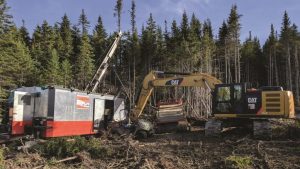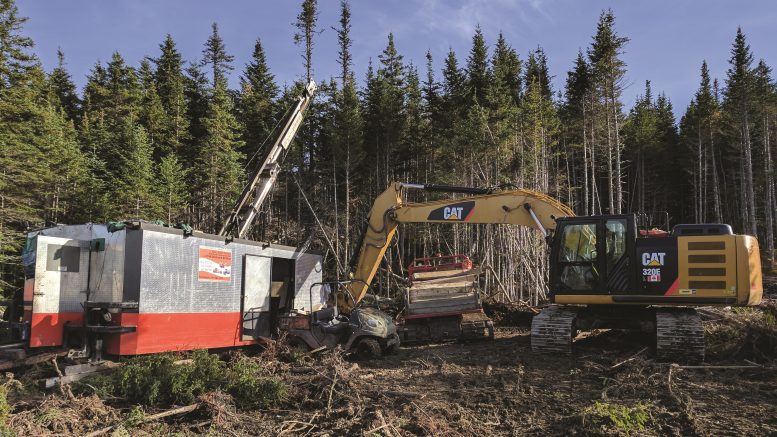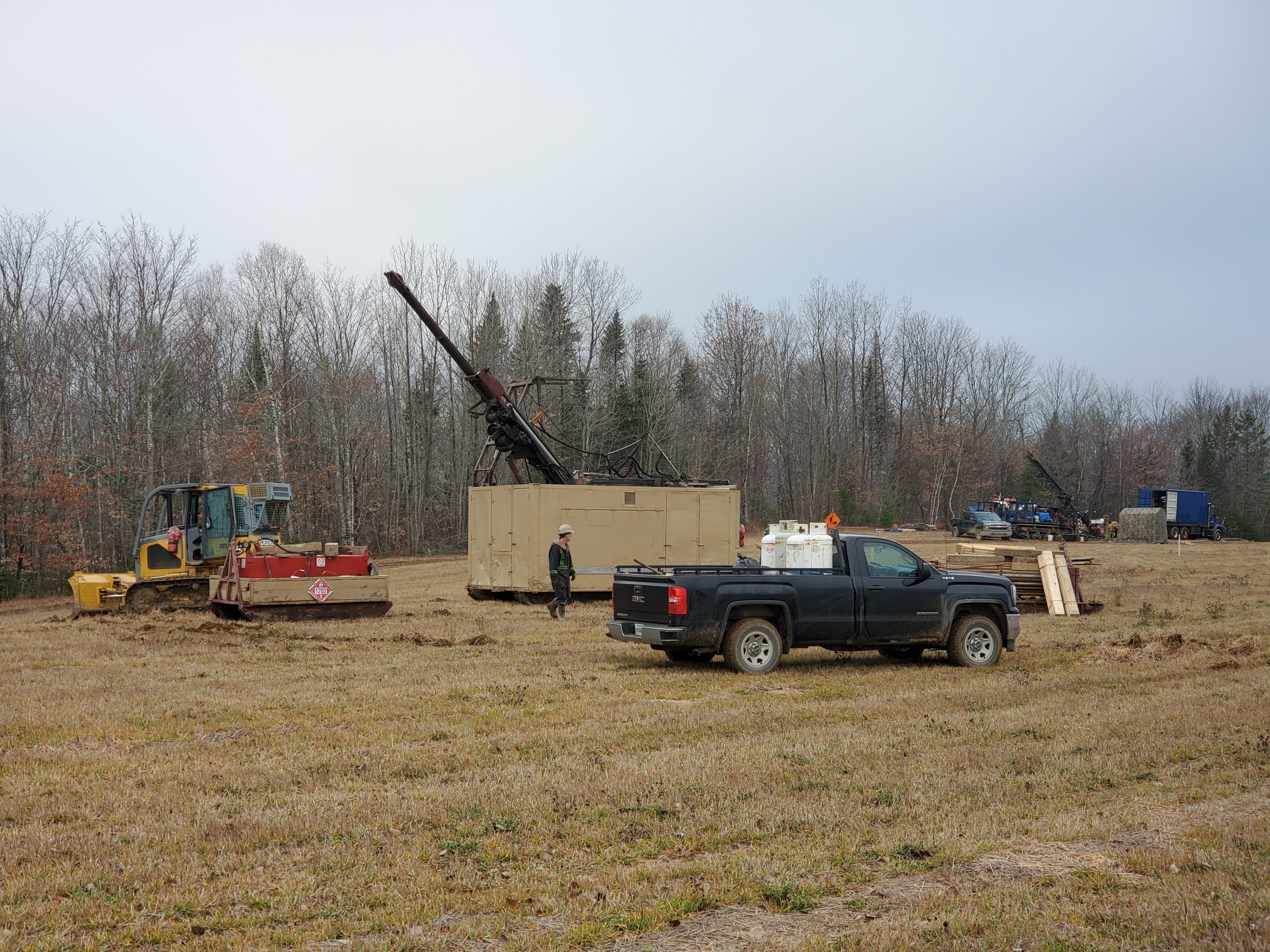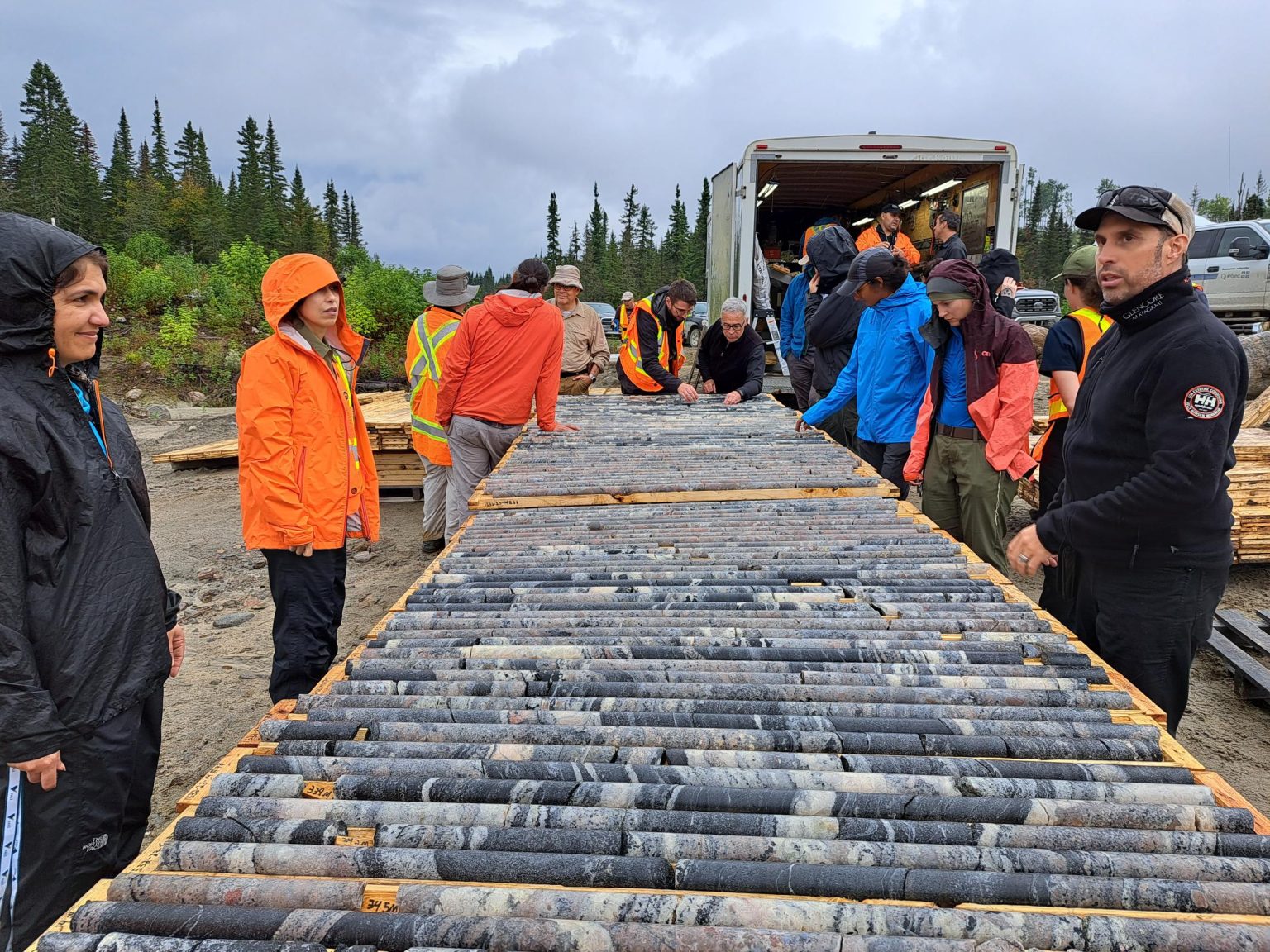[caption id="attachment_1003743131" align="aligncenter" width="550"]
 Drill site at Valentine Lake Credit: Marathon Gold
Drill site at Valentine Lake Credit: Marathon Gold[/caption]
Marathon Gold’s Environmental Impact Statement (EIS) for the Valentine gold project has been accepted for a formal review by the federal assessment agency, which, according to Marathon, is a significant milestone in the Environmental Assessment (EA) process for Valentine. After determining that the EIS for Valentine meets the federal EIS guidelines issued in July 2019, the Impact Assessment Agency of Canada (IAAC) is now reviewing the document.
The federal and provincial technical reviews are expected to take approximately 12 months to complete, and will include information requests and public consultations. Permitting for activities related to the project construction and operations would take place after the EA process is successfully completed.
The developer submitted the EIS to the IAAC and to the provincial department of Environment, Climate Change and Municipalities on Sept. 29. The EA process for Valentine started in April of 2019; this assessment is done in line with both the Canadian Environmental Assessment Act and the provincial Environmental Protection Act.
The EIS incorporates baseline environmental data collected as early as 2011, and includes the results of a Current Land Use and Traditional Knowledge Study, as well as an independent economic assessment of the project.
The EIS document looks at the potential environmental and socio-economic impacts of the project, with 15 areas of study. The study includes a particular focus on potential water quality and fish habitat impacts, from the placement of project infrastructure and facilities, as well as on the potential effects on a nearby hydroelectric reservoir and dam. In each of the 15 areas, the EIS defines the potential impacts of the development, and proposes mitigation measures.
Between March 2019 and this summer, the company held public meetings, engagements and information sessions with First Nations groups, local communities and regional civil society groups, and their feedback has been incorporated into the planning and design process for the proposed Valentine development.
In April, the company released a prefeasibility study for Valentine, which outlined a 12-year open pit and conventional milling operation producing an average of 175,000 oz. of gold annually in the first nine years of operation.
The EIS is available for review and comment online, by clicking
here. To see CMJ's October feature on Marathon,
click here.

 Drill site at Valentine Lake Credit: Marathon Gold[/caption]
Marathon Gold’s Environmental Impact Statement (EIS) for the Valentine gold project has been accepted for a formal review by the federal assessment agency, which, according to Marathon, is a significant milestone in the Environmental Assessment (EA) process for Valentine. After determining that the EIS for Valentine meets the federal EIS guidelines issued in July 2019, the Impact Assessment Agency of Canada (IAAC) is now reviewing the document.
The federal and provincial technical reviews are expected to take approximately 12 months to complete, and will include information requests and public consultations. Permitting for activities related to the project construction and operations would take place after the EA process is successfully completed.
The developer submitted the EIS to the IAAC and to the provincial department of Environment, Climate Change and Municipalities on Sept. 29. The EA process for Valentine started in April of 2019; this assessment is done in line with both the Canadian Environmental Assessment Act and the provincial Environmental Protection Act.
The EIS incorporates baseline environmental data collected as early as 2011, and includes the results of a Current Land Use and Traditional Knowledge Study, as well as an independent economic assessment of the project.
The EIS document looks at the potential environmental and socio-economic impacts of the project, with 15 areas of study. The study includes a particular focus on potential water quality and fish habitat impacts, from the placement of project infrastructure and facilities, as well as on the potential effects on a nearby hydroelectric reservoir and dam. In each of the 15 areas, the EIS defines the potential impacts of the development, and proposes mitigation measures.
Between March 2019 and this summer, the company held public meetings, engagements and information sessions with First Nations groups, local communities and regional civil society groups, and their feedback has been incorporated into the planning and design process for the proposed Valentine development.
In April, the company released a prefeasibility study for Valentine, which outlined a 12-year open pit and conventional milling operation producing an average of 175,000 oz. of gold annually in the first nine years of operation.
The EIS is available for review and comment online, by clicking
Drill site at Valentine Lake Credit: Marathon Gold[/caption]
Marathon Gold’s Environmental Impact Statement (EIS) for the Valentine gold project has been accepted for a formal review by the federal assessment agency, which, according to Marathon, is a significant milestone in the Environmental Assessment (EA) process for Valentine. After determining that the EIS for Valentine meets the federal EIS guidelines issued in July 2019, the Impact Assessment Agency of Canada (IAAC) is now reviewing the document.
The federal and provincial technical reviews are expected to take approximately 12 months to complete, and will include information requests and public consultations. Permitting for activities related to the project construction and operations would take place after the EA process is successfully completed.
The developer submitted the EIS to the IAAC and to the provincial department of Environment, Climate Change and Municipalities on Sept. 29. The EA process for Valentine started in April of 2019; this assessment is done in line with both the Canadian Environmental Assessment Act and the provincial Environmental Protection Act.
The EIS incorporates baseline environmental data collected as early as 2011, and includes the results of a Current Land Use and Traditional Knowledge Study, as well as an independent economic assessment of the project.
The EIS document looks at the potential environmental and socio-economic impacts of the project, with 15 areas of study. The study includes a particular focus on potential water quality and fish habitat impacts, from the placement of project infrastructure and facilities, as well as on the potential effects on a nearby hydroelectric reservoir and dam. In each of the 15 areas, the EIS defines the potential impacts of the development, and proposes mitigation measures.
Between March 2019 and this summer, the company held public meetings, engagements and information sessions with First Nations groups, local communities and regional civil society groups, and their feedback has been incorporated into the planning and design process for the proposed Valentine development.
In April, the company released a prefeasibility study for Valentine, which outlined a 12-year open pit and conventional milling operation producing an average of 175,000 oz. of gold annually in the first nine years of operation.
The EIS is available for review and comment online, by clicking 




Comments